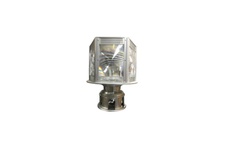| English | Select | |
| 한국어 | Select | |
| Русский | Select |

Portside aids |
Starboard side aids |
Special aids |
Management of Light Buoys
- Regular Checks light buoys(more than once a month)
· Checking light buoys for their appearance and coating conditions
· Checking their locations(whether they have moved or not)
· Checking the lighting states and power systems of signal lanterns
· Checking the wiring states of electric wires
· Checking other functional problems
· Writing a regular check report
- Checks by the supervising port administration(twice per year)
- Salvage checks(once every two years)
· Inspecting and checking the coating conditions of flotation sections
· Inspecting and checking the power systems
· Inspecting and checking mooring systems
- Regular checks for signal lanterns(once every three years)
· Doing a regular check before using one and then every three years
· Checking signal lanterns and flashing apparatuses
· Inspecting and checking the lenses and modules
Ownership Criteria of Spare Private Beacons
- Light Buoys : 15% or more of installation number within the harbor limits and 20% or more of installation number outside the harbor limits(when the installation number is under five, it should be one or bigger)
- Buoys : 15% or more of installation number within the harbor limits and 20% or more of installation number outside the harbor limits(when the installation number is under five, it should be one or bigger)
Buoys are floating maritime structures used to guide a sailing boat to the harbor or signal an obstacle. They mark courses, dangerous rocks, shallow waters, no sailing zones, and maritime construction sites. When a lamp is installed in them, they are called light buoys.
They are placed to signal rocks, no sailing zones, course width, changing points of course, and changing points of water level at the harbor.
Forms | Light buoys | ||||
LANBY-100 | LS-35 | LL-30 | LL-28 | LL-26 | |
Standard installation points | The entire seas Major passages, Strong tidal currents | The entire seas, Major passages, Strong tidal currents (~7kt) | The entire seas, Major passages, Strong tidal currents (~7kt) | The entire seas, Strong tidal currents (~7kt) | The entire seas, (~5kt) |
Water level | 40m~ | 10~40 m | 10~50 m | 10~40 m | 10~30 m |
Standard installation map |
| ||||
Forms | Light buoys | |||||
LL-26(M) | LL-24 | LS-24 | LSP-28 | LSP-24 | LT-10 | |
Standard installation points | The entire seas (~3kt) | Inshore (~3kt) | Shoaling sea areas, Inshore (~3kt) | Inshore (~2kt) | Inshore (~1kt) | Inshore (~3kt) |
Water level | 10~30 m | 10~20 m | 2~20 m | 12~18m | 13~17 m | 10 m |
Standard installation map | ||||||
Forms | Light buoys | |||||
Small buoys for fishing grounds | General buoys for fishing grounds | Light wreck buoys for manpower movement | Small light buoys | Buoys for rapid torrents | Observation buoys for marine meteorology | |
Standard installation points | The entire seas (~3kt) | The entire seas (~5kt) | The entire seas (~3kt) | The entire seas (~3kt) | The entire seas, Strong tidal currents (~10kt) | The entire seas (~7kt) |
Water level | ~20m | ~30m | ~20m | ~20m | ~15m | ~30m |
Standard installation map | ||||||
Forms | Buoys | |||||||
U-17C(P) | U-17S(P) | U-17C(S) | U-17S(S) | UR-17C(P) | UR-17S(P) | UR-17C(S) | UR-17S(S) | |
Standard installation points | The entire seas, Strong tidal currents (~5kt) | The entire seas, Strong tidal currents (~5kt) | The entire seas, Strong tidal currents (~5kt) | The entire seas, Strong tidal currents (~5kt) | The entire seas, Strong tidal currents (~5kt) | The entire seas, Strong tidal currents (~5kt) | The entire seas, Strong tidal currents (~5kt) | The entire seas, Strong tidal currents (~5kt) |
Water level | 2~25 m | 2~25 m | 2~25 m | 2~25 m | 2~25 m | 2~25 m | 2~25 m | 2~25 m |
Standard installation map |  | |||||||






























































